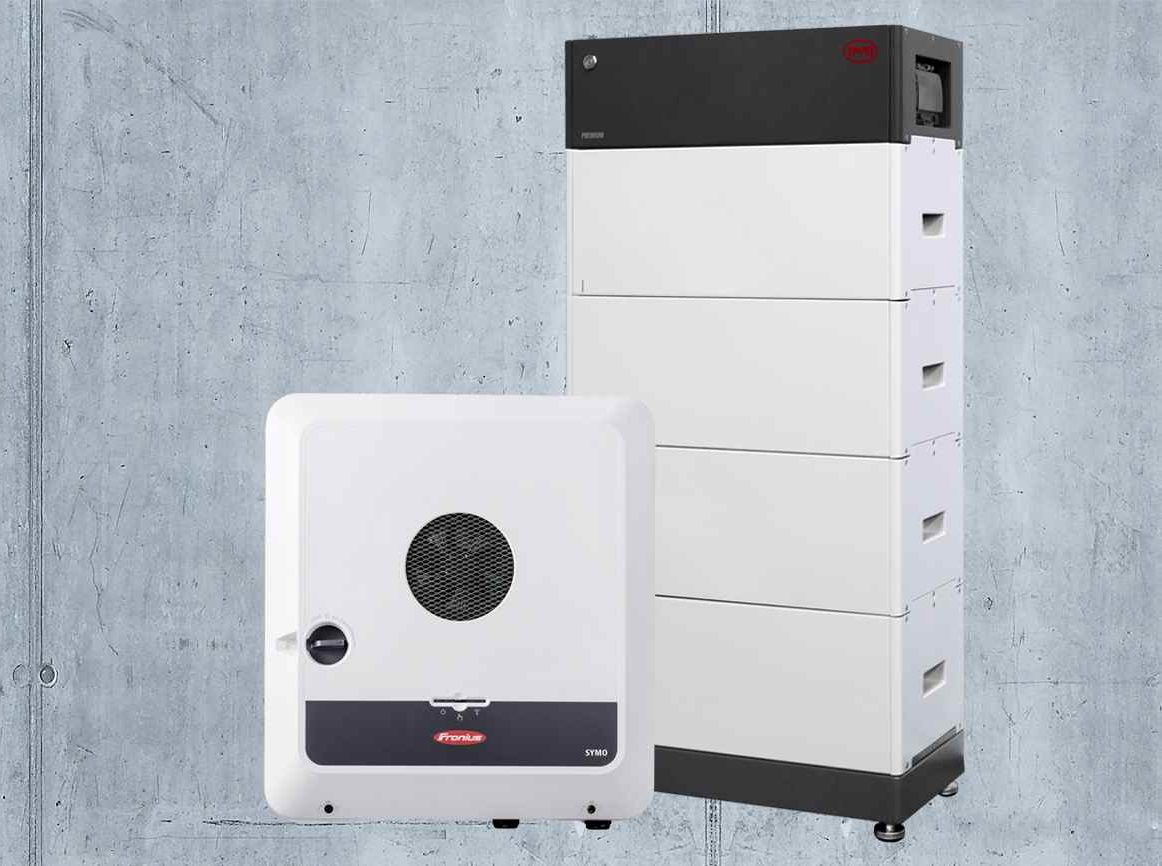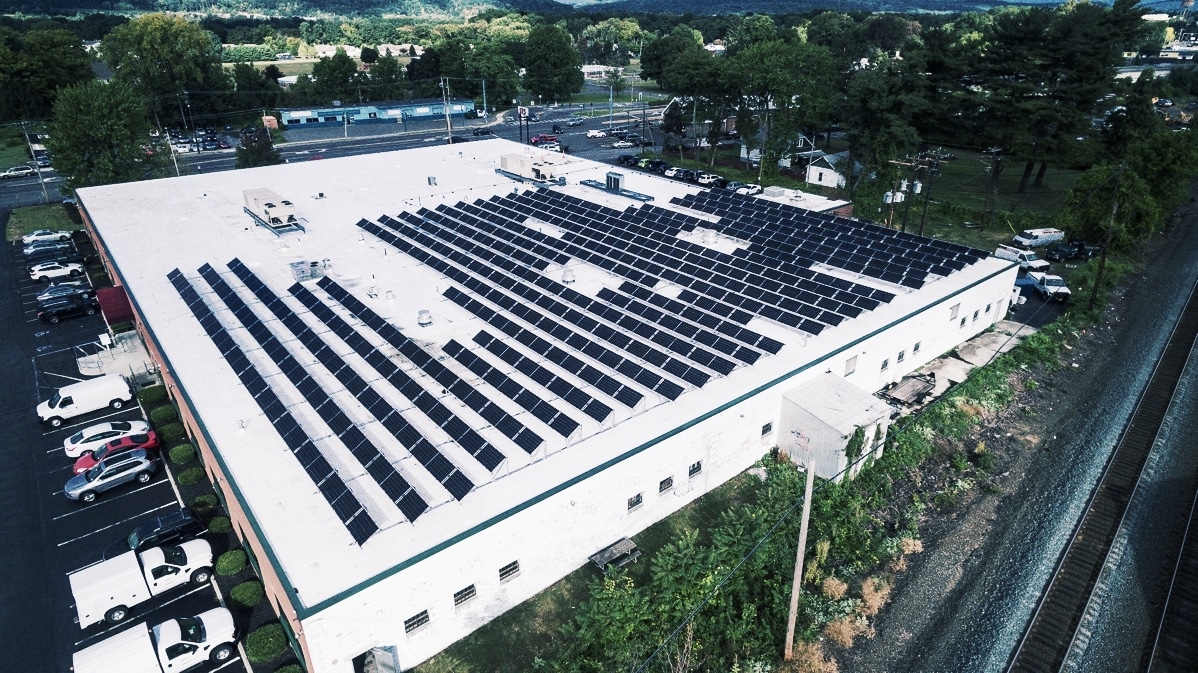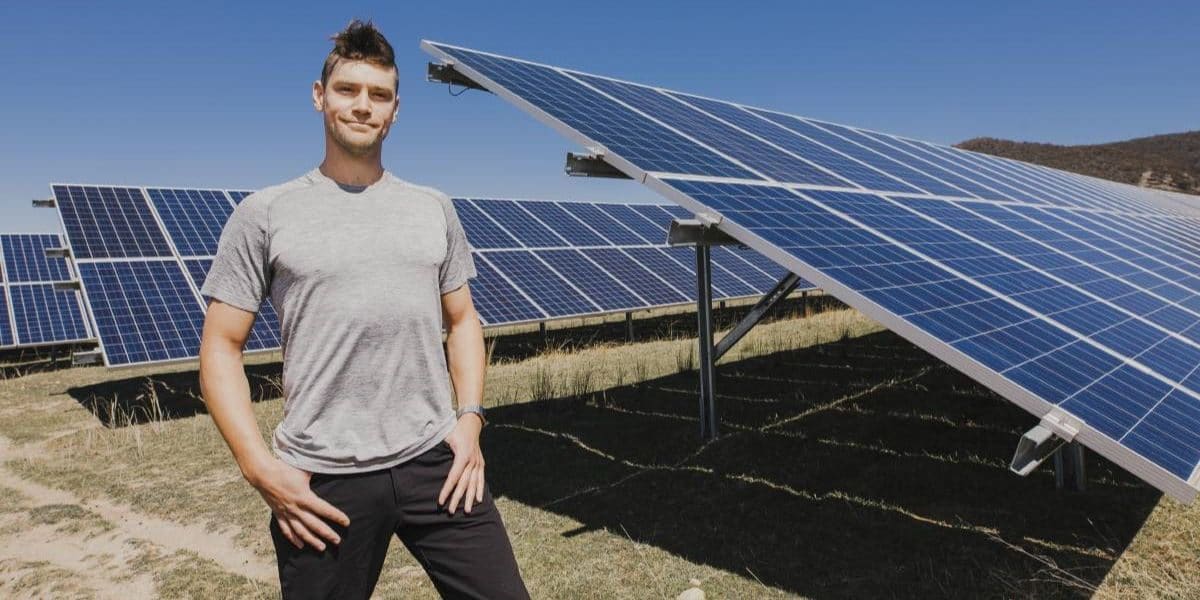As a residential salesperson, PVWatts was good enough. In the largest projects, with the highest level financial acumen, little solar nuances found within 1 sq squares can be the financial difference. Haven’t yet used tools like this, but soon. “Solcast produces real-time, historical and forecast estimates of the available solar radiation resources around the globe. Altogether, this requires processing imagery from five geostationary weather satellites, which take snapshots of the Earth from space every 5-15 minutes. These images can be as fine as 1 kilometer in spatial resolution and are re-captured and transmitted as frequently as every five minutes – a large volume of data.” Source – Amazon.com who used Solcast. By the way, I met founder Dr. Nick in the featured image above, and saw a presentation of his at a conference. Will be covering that eventually on pv magazine USA.
The BYD battery gear in this combo – the tall unit in the below image – comes in modules that can be added. This is a trend, seemingly giving flexibility in sizing and maing install a little easier. Probably makes repairs a bit easier as well. Wonder if we’ll end up with a super-standardized individual energy storage unit. “Fronius and BYD combine to make the Gen24 Plus. The new Primo GEN24 Plus (3 to 6 kW) and the new Symo GEN24 Plus will be available from the end of the second quarter of 2020. All GEN24 Plus hybrid inverters are equipped with a battery connection, energy management, monitoring and open interfaces as standard. The BYD Battery-Box Premium storage systems are made up of individual storage modules and can be combined with the GEN24 Plus in two different designs – Battery-Box Premium HVS (5,12 to 10,24 kWh) and the Battery-Box Premium HVM (11,04 to 22,08 kWh.).“Source – Fronius

And speaking of battery and inverters, let’s talk California and mix a few together. First – Blue Planet Energy and Outback Power are offering discounts to California customers. Outback’s pitch, “California residents up to 24 percent off its Manufacturer Suggested Retail Price (MSRP) on three energy storage packages. Featuring OutBack™ inverters and lithium ferrous phosphate batteries, packaged systems are specifically designed to meet California regulations and come with everything needed to install backup power with ease“. Whereas Blue Planet Energy is giving $500 back to those affected, “The Blue Ion incentive program is designed to offer a price break for new energy storage systems purchased by February 15, 2020, as well as assistance connecting with a local certified installer for Californians seeking to hedge against the costs of power loss.” Annnnd, last of all, SMA energy storage hardware has gotten onto the currently very short and young list of storage gear approved for California.
Prism Solar was the manufacturer of the commercial white roof installed bifacial solar panel in the big banker story recently. After that story pubbed, and I asked for white roof bifacial data from the big testing groups, they reached out to pv magazine USA to point out a case study on their website. One nuance pointed out is that the DC to AC ratio was lowered to 0.97:1. This lower ratio is because the panels are sized due to their front sized wattage, not including the bifacial bump. Going to have to think about the broader consequences of this. Now though, the meat of the data, “Based on a Performance Ratio analysis of the seasonal measured bifacial values compared to typical annual monofacial values, the Prism Solar Bi60-368BSTC modules were collecting between 37.77%–61.04% more energy than what would be typically expected for an equivalent monofacial installation for the winter conditions, and between 11.11%–29.87% for the spring conditions.” Source Prism Solar

Raw polysilicon inched down, monosilicon as well. German chemical company Wacker Chemie AG has warned it will be forced to make an extraordinary write-down of around €750 million on the balance sheet value of its polysilicon production assets this year. The company says it is directly related to incentives paid to Chinese manufacturers. Anyone have insight into the Chinese goals with polysilicon? What volumes/prices they see the product getting to before they allow it to float more? PV InfoLink suggests polysilicon and wafers have hit break even prices for many manufacturers.
Modules moved down a bit, and real soon, we’re going to see spot price lows in the teens for poly products.
https://twitter.com/PvInfolink/status/1204710810020270080
This content is protected by copyright and may not be reused. If you want to cooperate with us and would like to reuse some of our content, please contact: editors@pv-magazine.com.








Way back in the ‘day’, when Sanyo was making the bifacial 195 watt panels almost 20 years ago, their data suggested on average a back side generation increase of about 20% over standard mono-facial panels of the day. Realistically the data for the winter months is interesting. When snow covers the top side of the panel, the bottom reflected would be helpful in some solar PV harvest, while creating enough heat to loosen the snow on top to slide off. When more applications roll out, it will be interesting to see if this is a real advantage over ‘regular’ solar PV panels everywhere.
I like the battery box. As a homeowner I would love a battery system that I can expand if/when needed by stacking a battery lego on the top instead of having to hire an electrician to come out and wire yet another battery into the system.
That bifacial gain on the white roof is definitely a wow. And, Solarman’s explanation of winter snow cover makes total sense.